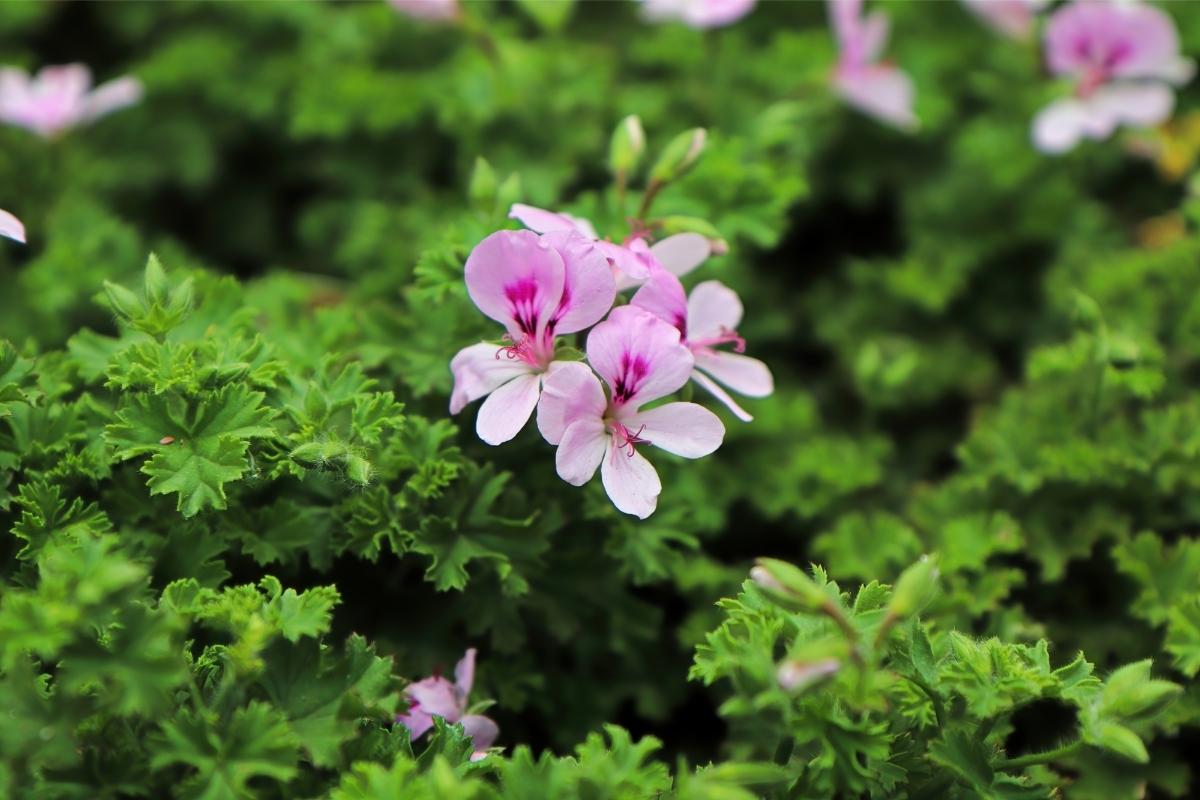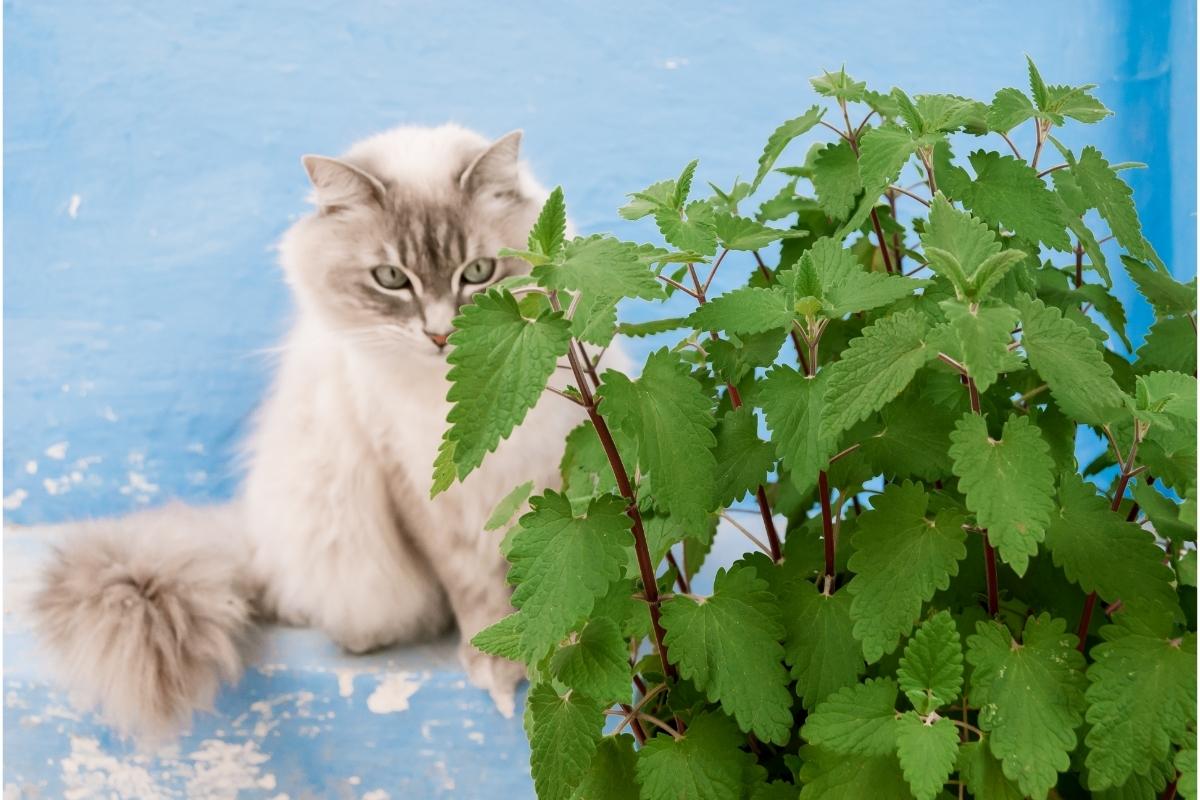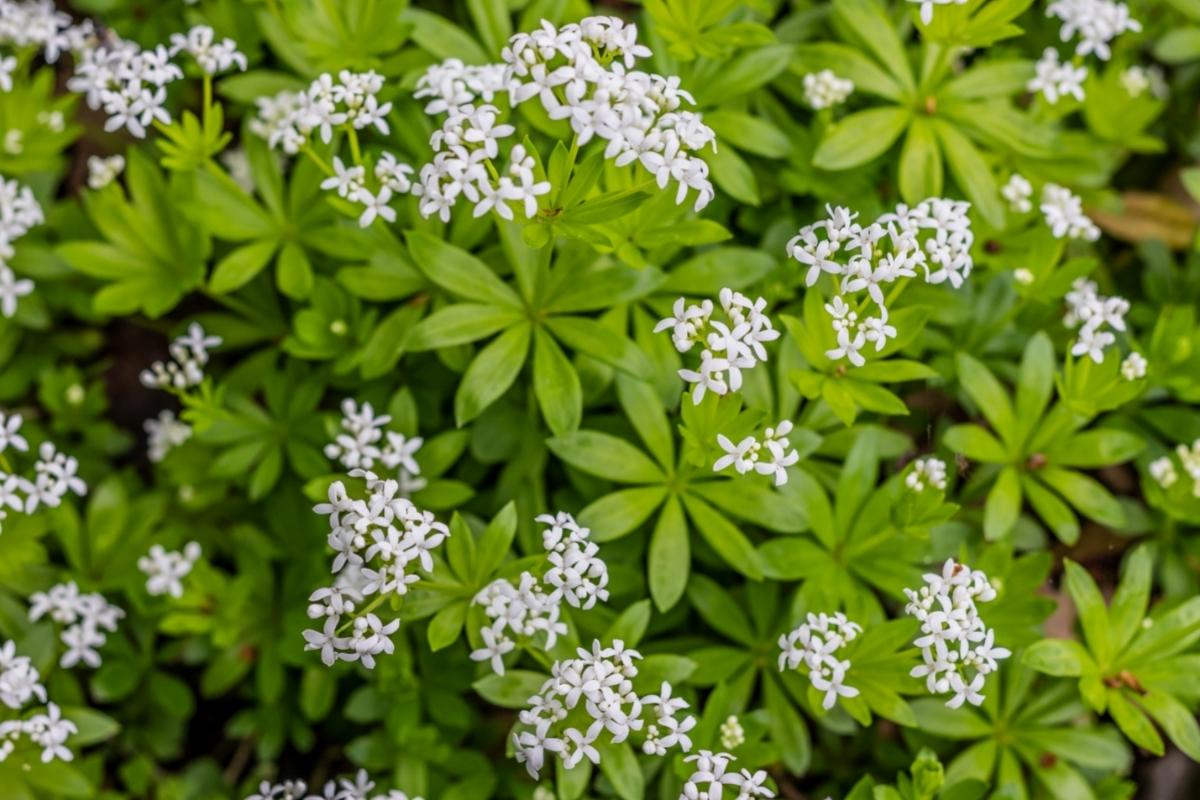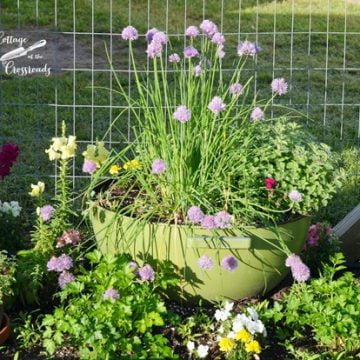Flies carry a lot of germs and are a nuisance in general. You cannot always have a fly swatter at the ready, especially if you are hosting a barbecue or dinner event and have guests to attend to.
So, keeping them at bay without the use of a fly swatter can be really tricky to do.
Typically, the lifecycle of a fly is between 15 and 25 days which is not very long, but they make up for it in their activity.
Although they are more active during the day, they are equally bothersome at night and can seek refuge inside your home when the temperature drops-spreading disease everywhere they go.

This guide will go through the different types of flies out there, why they come into your home and how to repel flies with specific insect-repelling plants, as well as other methods to repel flies.
Types of Flies
In North America alone, there are over 16,000 types of flies that you may come into contact with and may bear disease, bacteria, and other germs.
Some of the flies that you will commonly find in and around your household, especially during the warmer months of the year, include the common housefly, gnats, fruit flies, and a few more that will be discussed here.
Housefly
The common housefly is probably the type of fly that we are most familiar with. They are grey in color and can vary in size depending on where they are in their growth cycle.
These flies ingest their food by vomiting on it to help break it down and then sponge it up with their mouths.
Common food sources for houseflies around your home include the organic matter in your garden or your trash, exposed food, in particular meat and fish, as well as pet and human excrement.
Fruit Fly
Fruit flies are attracted to ripe and fermenting fruit and other produce, in which they will lay their eggs.
They come into your home from the garden, but you may also commonly find them in supermarkets and restaurants.
Gnats
Gnat is a collective noun for a group of small flies found in the United States and are often referred to as midges.
These tiny insects bite as the female needs blood to produce their eggs. They are most commonly around at dusk and are especially common near places with stagnating water.
Drain Fly

Like gnats, just hairier, drain flies have a fuzzy appearance and leave a powdery substance behind when crushed.
As their name suggests, they breed in drains and sewers. As a result, you may commonly find them in and around your bathroom near the tub or inside the shower.
Blow Fly
Blowflies have a metallic blue or green sheen to their exoskeleton and are mainly present in warmer climates.
They feed on decaying organic material such as rotting meat and are often found in dumpsters or trash cans.
Blowflies like to lay their eggs on fresh meat and can be a real nuisance at a cookout.
Phorid Fly
This fly has a humped back and runs away instead of immediately flying.
For example, it is often found around rotting vegetation, like compost heaps. However, it is also found near trash cans and decaying or rotting organic matter anywhere.
What Attracts Flies?
As alluded to above, flies are generally attracted to organic material, specifically those undergoing purification.
As a result, they eat things we humans deem disgusting, mainly because of their smells-rotting fruit and vegetables and other decaying organic material like meat or fish, garbage, and manure or compost.
Flies are more prevalent in the late spring to fall months, when it is warm, as the higher temperature and humidity serve as the best conditions for their breeding. In addition, flies will come into your home if you leave things uncleaned and unkempt.
For example, if you have garbage or trash cans inside and outside the home that are uncovered.
Perhaps a rat or two has died in your attic or walls. This will attract flies and any form of a compost heap, overripe fruit, sweet drinks, and even fresh meat left out before cooking.
Hazards Of Flies
Because of how flies eat and where they lay their eggs, they are carriers of over a hundred pathogens. These pathogens can include E.coli, Salmonella, and Staphylococcus and can cause dysentery, cholera, and typhus outbreaks.
Consuming their eggs and larvae without knowing can also lead to serious illness.
Control Measures
Thankfully, several control measures are easy to implement to relieve you from an influx of flies in your home. These include keeping a clean home using biological controls and pesticides.
Keep Your Home Clean And Tidy
Keeping your house clean and free from elements that attract flies is one of the easiest ways to keep flies at bay.
In the kitchen, try to change your kitchen trash as often as possible and clean the actual trash can out with warm water and soap regularly.
When preparing food, especially in the summer months, keep food and drink covered at all times, no matter what it is. This can be done using nets that are specially designed to repel flies.
Any spills and debris from food must be wiped up and thrown away and then, in terms of the outdoor trashcans, make sure that they are correctly sealed. When recycling, rinse out any bottles or cans before putting them in the container.
If you own pets, be sure to clean up and dispose of their waste regularly. Having your dog's business outside on the lawn for extended periods of time will not only attract the flies, but it will also serve as their food source.
The flies that then come into your home will be carrying all the bacteria from the dog excrement.
Extermination And Use Of Pesticides
You can always enlist the help of your local exterminator if you have an infestation of flies.
However, it is essential to remember that pesticides are poisonous and are a source of harm to you, your family, pets, and the environment, mainly through the air and water. They also harm other necessary insects and animals in the ecosystem.
If you are self-administrating pesticides, be sure to dispose of the cans correctly as recommended to avoid any health-related accidents from occurring, specifically if you have children.
Biological Controls: Other Insects And Plants
Other insects and arachnids like spiders and wasps prey on insects like flies. They, therefore, act as a form of biological control. So as much as they might creep you out, these crawlers are great at keeping the number of flies down.
Plants That Repel Flies
Many plants repel flies. Some of these plants are edible and have powerful polyphenol and aromatic chemical compounds (also known as essential oils) from which flies try to stay clear.
Most of these are beautiful flowering plants that look good and smell good and are functional and can be added to your food or as a part of table decoration. Many of these plants can be grown outside in your garden beds or inside in pots in your kitchen windowsills.
Some of these plants listed below that repel unwanted insects like flies are potent enough on their own. Other plants need some help to extract their oils to do the job.
Basil

Basil or Ocimum basilicum, famed for its use in Italian cooking, are also useful insect repellents.
Both the fresh and dried varieties of basil that you get from the store have enough scent to repel unwanted insects like flies and even mosquitoes.
These plants grow just about anywhere and will be comfortable in a pot plant inside and outside the house or left to grow wild in vegetable gardens.
Used in vegetable gardens, it will repel many insects and other bugs that like to feed on tomato plants or squash.
It can be picked just before a sit-down dinner or lunch event and added to the table's vases for decoration and repel flies away from the food.
Alternatively, plant the basil in attractive pot plants and use that as multipurpose table decor.
The plant is an annual plant. However, it does reseed itself in warm climates if allowed to bloom and can be kept alive all year round, meaning you will never have a fly problem.
Mint
The large mint family is filled with herbs that are excellent insect repellents. They are all aromatic with mentha, which is super potent to flies.
Mint is a hardy herb that grows rapidly and can grow quite well as a runner-as ground cover or in a pot plant as a bush.
Again, this is a multipurpose herb used in a lot of cooking and can successfully deter insects like no other plants out there.
Of course, the essential oil, mentha, produced by mint plants, is the most potent aromatic that wards away bugs, so it may be beneficial to invest in a peppermint diffuser for your house.
Mentha has also long been used as a medicinal aid- it is excellent for digestive issues, headaches, and opening up the nasal passages during a cold.
Rosemary
Rosemary is a hardy and woody plant that will stay evergreen in most areas and climates. They can be manicured into hedges or can thrive in a well-ventilated pot or planter.
They do well in the sun but can grow in rainy, more inclement climates and do equally well inside in the cooler months. They are also extremely easy to propagate.
Rosemary is a popular herb to use in cooking as it adds depth of flavor and aromatics to the dish. These aromatics are what repel bugs like flies. Try tying cuttings of rosemary around the kitchen or porch to repel flies.
They will dry out over time and then can be used in your next stew. Rosemary also makes for beautiful table decoration.
Lavender
Lavender, or Lavandula angustifolia, is a beautiful flowering plant that repels insects. It is a favorite in any garden and room because of its amazing scent and flowers.
The blooms attract beneficial insects and critters such as bees and butterflies to your garden and thrive particularly well in hot and sunny areas.
This perennial plant, when harvested, can be fried and put into sachets in drawers for fresh-smelling clothes and even pantries to keep moths away.
Although they take a while to produce blooms, you won't be sorry once you have them, as this versatile plant is a winner for repelling flies.
Catnip

Known as a plant cats go mad over, it has the opposite effect on insects, especially flies, ants, squash bugs, and weevils. The catnip aroma comprises many chemical compounds, including mentha and citronella, both deterrents of flies.
Catnip is a very easy plant to grow and is suitable for outdoors, but it is pretty hardy and competitive and can easily take over the whole garden.
So be sure to try to contain it in a planter box, pot plant, or even in hanging baskets.
If you have feline friends, this plant will do them a favor as well!
Eucalyptus
The silver-green foliage has long been associated with its medicinal properties and acts as a plant that repel flies. Eucalyptus oil has been a regulated natural insecticide since 1948, so it is handy to have in your garden.
The trees can reach up to 130 feet tall depending on the species, so be sure to choose a variety that is suited for pots.
The leaves carry the oil and can either be left to dry and used as a part of a floral bouquet in vases, crushed or rubbed onto pillows for easy breathing at night.
The oil mixed in water and used as a spray can be helpful as an antibacterial agent while being an insect repellent.
If you are congested in your sinus cavity, it is also useful to hang a bunch of eucalypti in the shower to release the aromas.
Bay Leaves
Bay leaves from the laurel trees have been used for centuries in cooking and placed inside kitchen cupboards and stores to keep away insects like weevils and even mice.
The herb is just as effective in repelling flies and can be hung around doorways to repel flies during the warmer months.
This evergreen tree can reach heights of up to 40 feet tall but does well as a topiary in a pot as well. It is slow-growing and needs rich soil, especially during its first few years of growth.
Combining rosemary and bay leaves are a winning floral arrangement and will allow a lovely scent to permeate the house.
Tansy
Tansy flowers are best known for their pretty, bright yellow blooms, and unlike the plants above, the scent that acts as an insect repellent comes from the tansy flowers.
The oil extracted from the flower can be used in a spray bottle to spray on your body or in and around the house or entry points of the house.
However, growing the plant in a pot plant in your house can be just as effective. It is relatively easy to grow and is best suited for indirect light and lots of water.
It is important to note that the plant is toxic if consumed and should be used with caution if you have any pets or livestock nearby.
Pennyroyal
This highly decorative plant repels insects such as flies and is often used in flower arrangements.
It is usually used to allow growing plat underneath your plants, especially those in your vegetable garden, acting as a natural insecticide.
However, it should also be used with caution, as too much of it can be toxic when consumed.
Woodruff

This ground cover of a plant thrives in a shady environment, and their white flowers produce a sweet scent that is useful at repelling flies. The flowers look beautiful in pots on the patio and are easy to look after.
Marigolds
Marigolds or Calendula officinalis, Tagetes erecta, and Tagetes patula are typically seen in and amongst the beds of a vegetable garden.
They act as a repellent for insects and attract spider mites and snails away from the other vegetables in the garden.
Carnivorous Plants
The famed Venus flytrap and other carnivorous plants can help keep your fly problem under wraps, but they use a lot of energy when catching the flies, so they do not always last that long.
Be sure to use this plant in combination with other plants that repel flies to sort out any fly problem you may experience.
Other Plants That Repel Flies
- Bee Balm
- Rue
- Wormwood
- Borage
- Chives
- Chrysanthemums
- Dill
- Garlic
- Hyssop
- Nasturtiums
- Petunias
- Sunflowers
Other Ways To Deter Flies
What else can you do to keep flies away? As you have read, these plants and many others can be strategically placed on your patio, near your barbecue area and kitchen to reduce insect influx into your home and onto your food.
Other than the methods discussed above, there are a few different ways to ensure that your household is not overrun with flies in the warmer months of the year.
If you have ponds nearby your house, make sure the water is changed as frequently as possible, as this is where some fly species thrive.
The same goes for any pet water bowls in and around your house.
In warmer parts of the United States, fans may be useful at stopping flying insects like flies from entering the home.
Frequently Asked Questions
What is a home remedy for getting rid of fruit flies?
To get rid of fruit flies in the home, take an empty jar and mix a tablespoon or two of water and apple cider vinegar, and sugar together in the jar.
Then, add a few drops of dishwasher detergent, mix it up and leave the jar open nearby the fruit bowl in your kitchen. The fruit flies will be attracted to the sweet, fermented smell and will go to the jar instead of the fruit.
Can houseflies smell?
Yes, they can. They are very good at smelling potential food sources and breeding grounds from miles away.
Conclusion
There you have it, several plants that repel flies. These plants are easy to come by, and most of them are multipurpose.
Hopefully, after reading this piece, you have more knowledge on how to repel flies naturally with the natural oil present in plants that are in herb gardens and serve as decorative plants all over the country!




Comments
No Comments